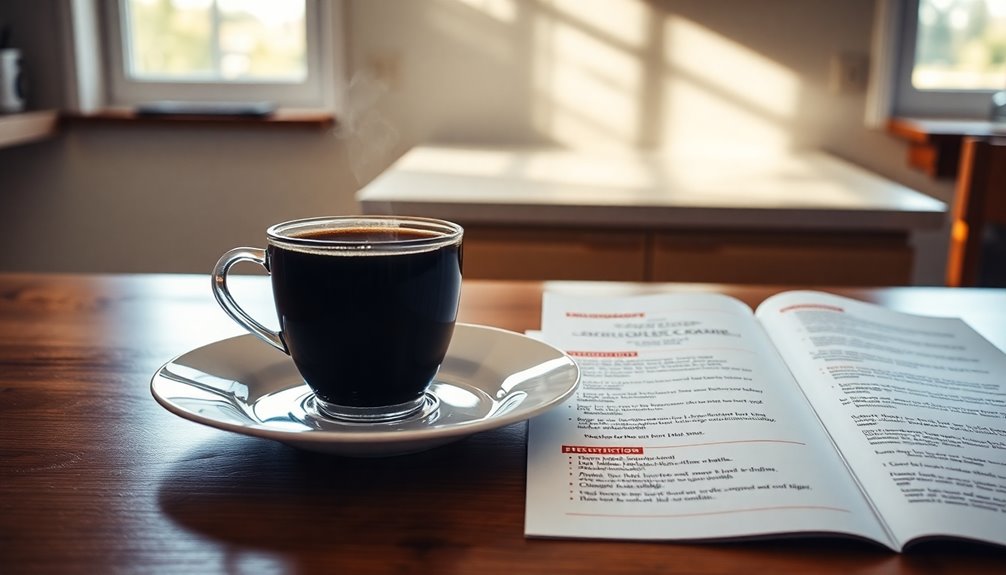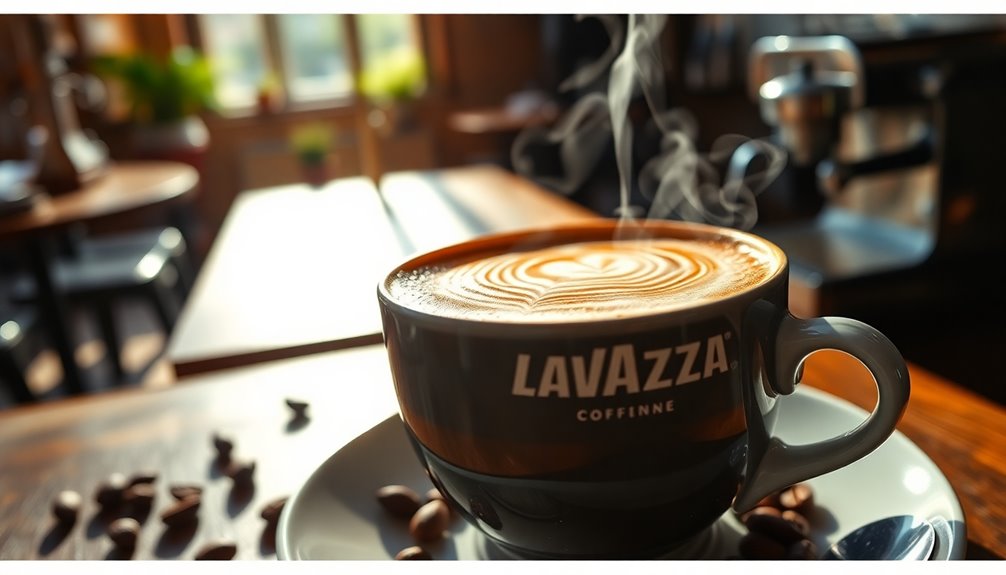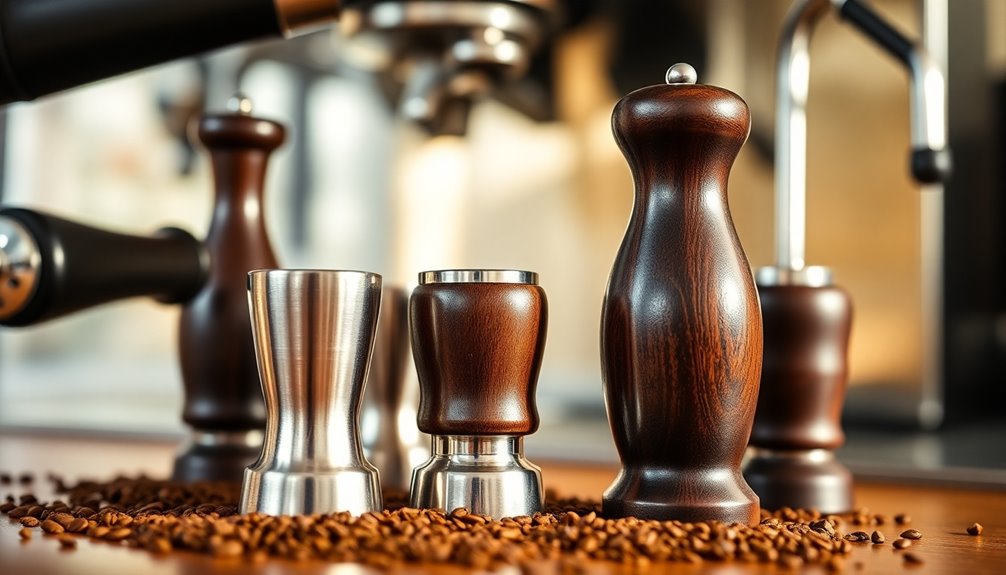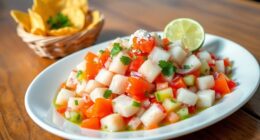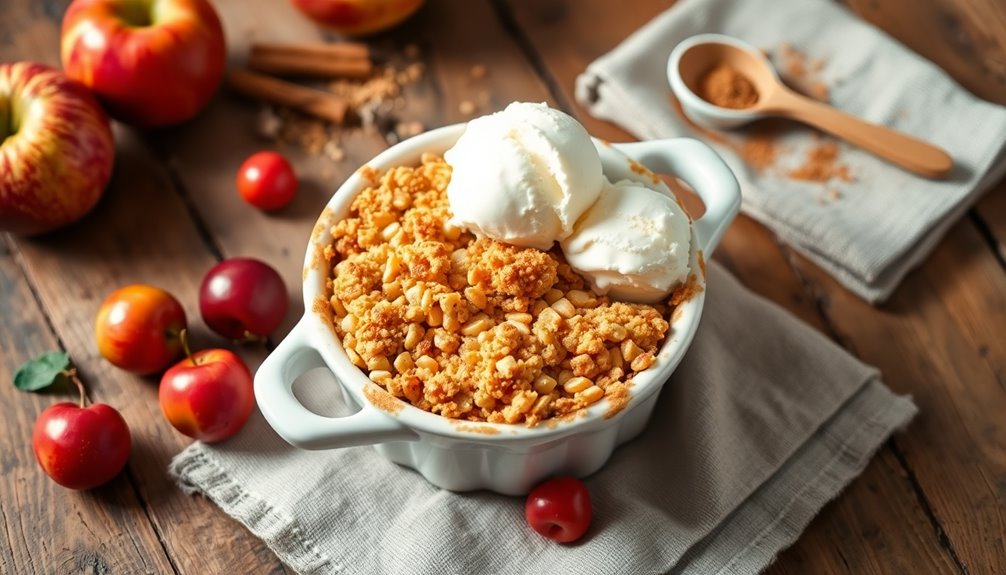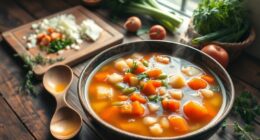A coffee shot is a concentrated serving of espresso, typically made with either 7 grams of coffee for a single shot or 14 grams for a double shot. This yields about 30ml or 60ml of liquid, respectively, and contains varying amounts of caffeine—30-50mg for a single and 60-100mg for a double. Each shot has three layers: crema, body, and heart, which combine to create a rich flavor profile. When you order, keep in mind that double shots are often the standard. There's plenty more to explore about coffee shots and how to enjoy them perfectly.
Key Takeaways
- A coffee shot is a concentrated serving of espresso, typically available as a single or double shot.
- A single shot uses 7 grams of coffee, yielding about 30ml, while a double shot uses 14 grams for about 60ml.
- It consists of three layers: crema, body, and heart, each contributing to the flavor and texture.
- The ideal extraction time for espresso shots is 25-30 seconds for optimal flavor balance.
- Caffeine content varies, with single shots containing 30-50mg and double shots containing 60-100mg of caffeine.
Definition of Coffee Shot
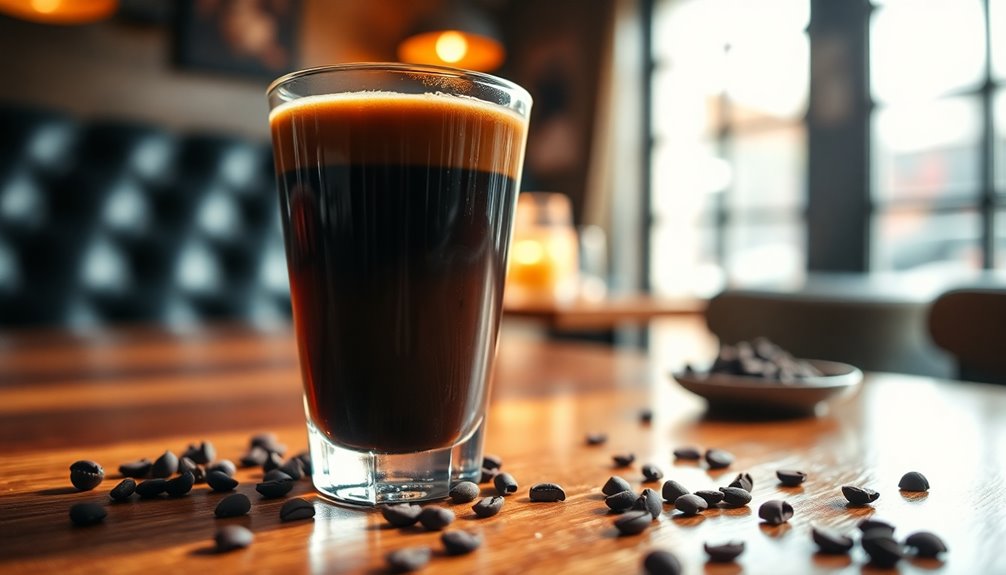
A coffee shot is a concentrated serving of espresso, typically defined by the amount of coffee grounds used and the resulting liquid produced.
A single shot uses 7 grams of finely ground coffee, yielding about 30ml (1 ounce) of espresso. This shot contains between 30 and 50mg of caffeine.
If you prefer a double shot, it includes 14 grams of coffee and produces around 60ml (2 ounces), packing 60 to 100mg of caffeine.
In the U.S., the double shot has become the standard, largely popularized by Starbucks in the 1990s.
However, keep in mind that definitions can vary across cafes, with some opting for non-traditional recipes that might alter caffeine content and flavor.
Coffee Shot Composition
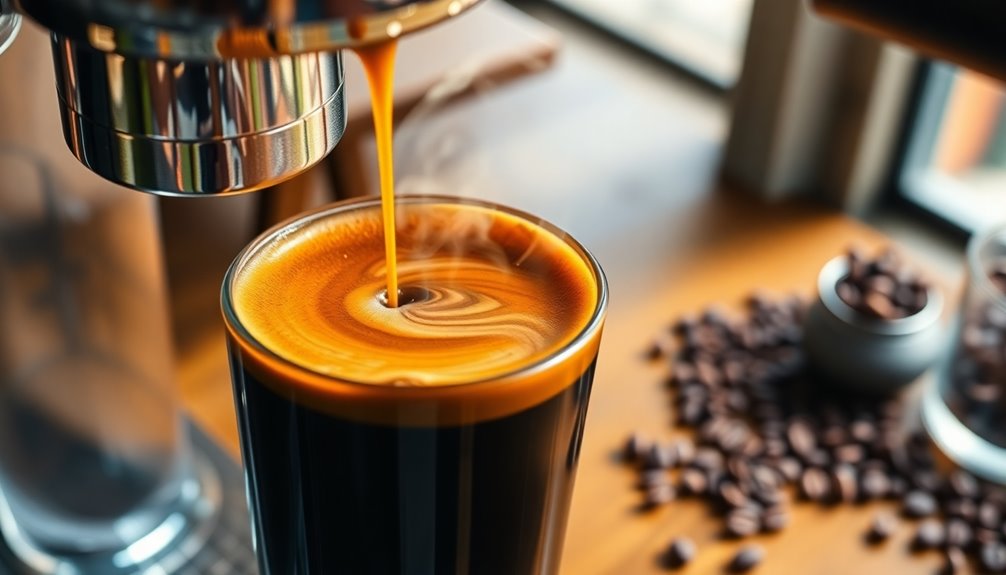
When pulling an espresso shot, understanding its composition is essential for achieving the perfect balance of flavors and textures.
The shot consists of three distinct layers: the crema, body, and heart. The top layer, crema, forms during extraction and features proteins, sugars, and oils, showcasing the espresso's finest tastes and aromas.
Below that, the body presents a caramel brown color, offering a rich and velvety texture that enhances mouthfeel.
Finally, the heart at the bottom is the thickest layer, packed with concentrated coffee oils and solids, which contribute depth and a more intense flavor.
To achieve optimal balance, aim for the right ratio of these layers within a 25-30 second extraction window.
Coffee Dosage Explained
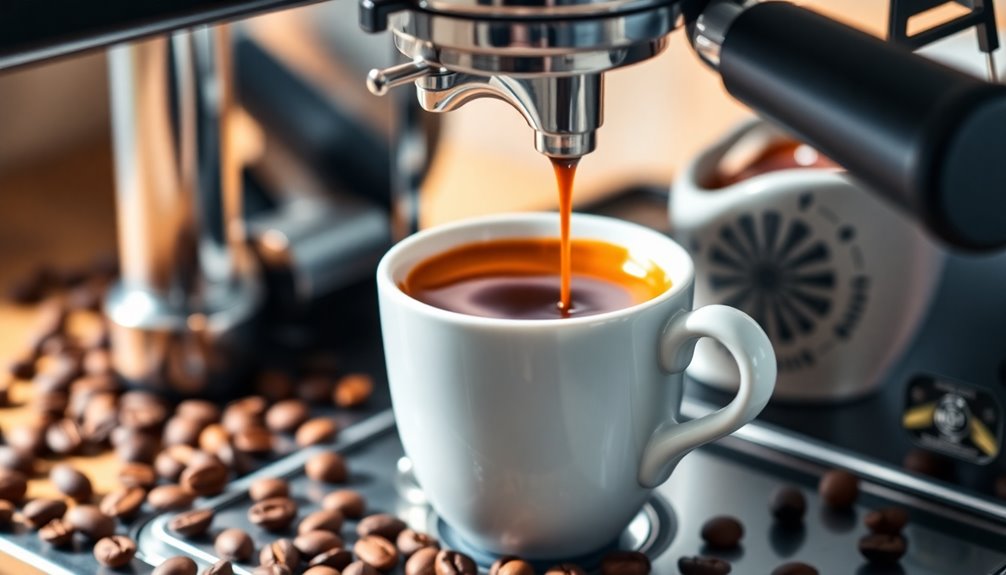
Understanding coffee dosage is crucial for brewing the perfect cup, as it directly impacts flavor and extraction.
Coffee dosing involves measuring and grinding the right amount of coffee for your chosen brewing method. Accurate dosing balances flavors and prevents over or under-extraction.
You can measure your coffee in grams or tablespoons, with 1 tablespoon roughly equal to 5 grams. Keep in mind that the amount you use can vary based on personal preferences and the brewing technique.
For the best results, use a scale to measure coffee grounds by weight. Start with general guidelines for each method, but feel free to adjust based on your taste to achieve that ideal cup of coffee.
Volume and Yield Details
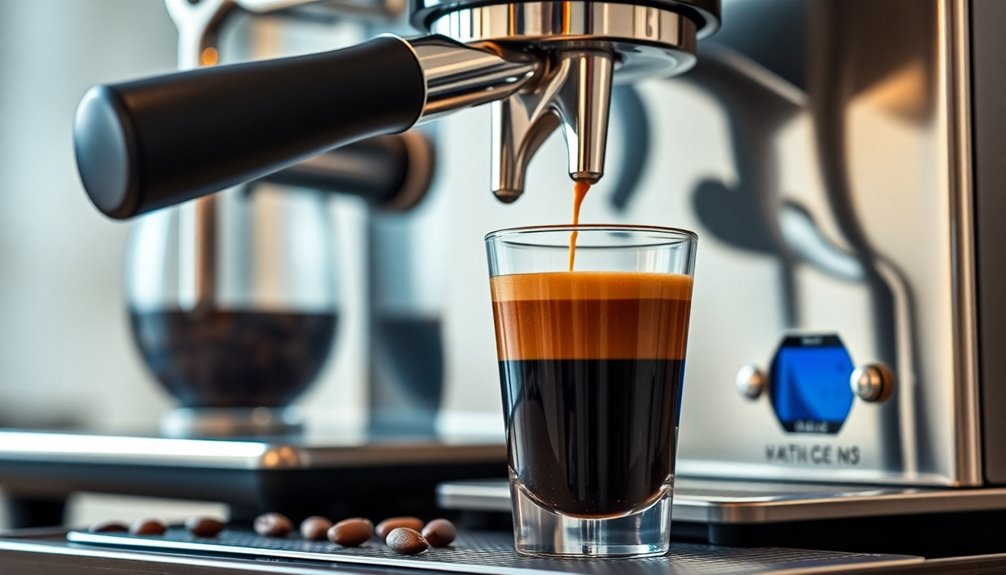
Volume and yield are key components in crafting the perfect coffee shot. A traditional single shot yields about 30ml, while a double shot gives you around 60ml, including crema.
However, the liquid alone can be 40-50ml for a double shot due to variations in crema and coffee freshness. When measuring, consider using mass instead of liquid volume for better precision; 14g of coffee typically yields 60ml visually but can weigh 35g. Bullet points enhance readability and organization in research papers, breaking down complex information into manageable segments. For consistency, stick to a brew ratio of 1:2 to 1:2.5, with double shots yielding 36 grams of liquid in about 30 seconds. Adjusting your grind settings can help maintain this yield, ensuring a quality shot every time.
Flavor Profiles in Extraction
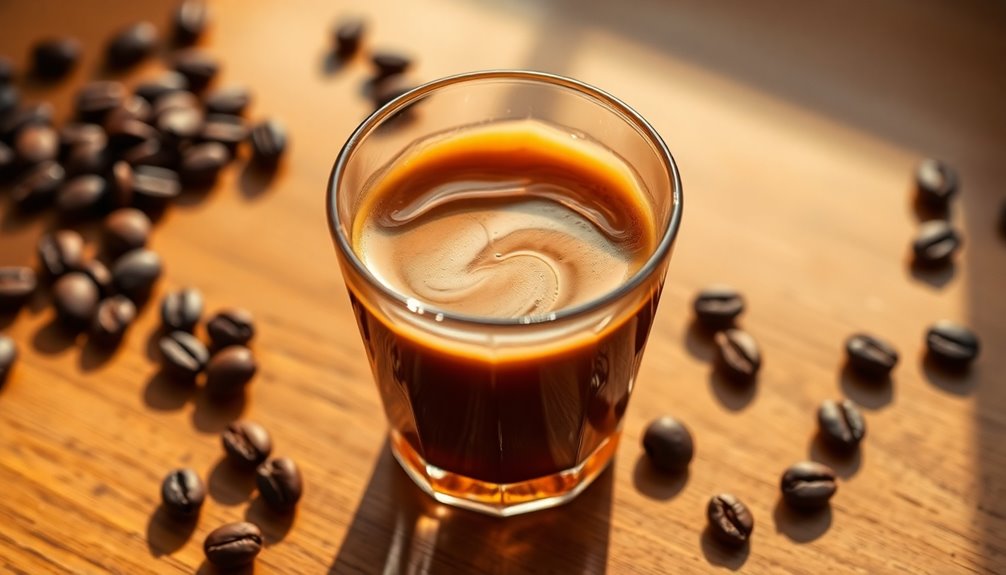
Crafting the perfect coffee shot goes beyond volume and yield; it's all about the flavor profiles that emerge during extraction. A well-extracted shot should be sweet and smooth, showcasing notes of chocolate, nuts, and caramel. Understanding that coffee contains hundreds of flavor compounds will help you appreciate the complexity of each shot. You'll enjoy a thicker brew with rich oils that contribute to its crema. Aim for a bright, tangy acidity that makes each sip sparkle.
Avoid under-extraction, which leads to sour, imbalanced shots lacking depth. Over-extraction, on the other hand, results in bitterness and ashy notes that mask subtle flavors.
Caffeine Content Overview
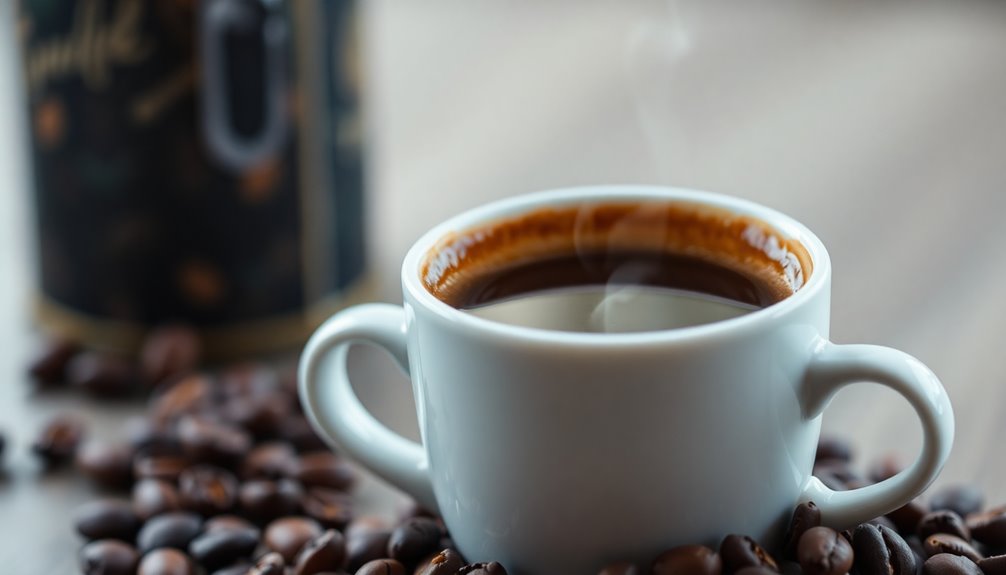
A single shot of espresso typically packs about 63 to 75 milligrams of caffeine, making it a concentrated source of energy. Depending on the coffee bean type and roast level, this amount can vary, ranging from 29 to 100 milligrams. Compared to regular coffee, espresso generally has more caffeine per ounce, even though its serving size is smaller. If you opt for a double shot, you'll get around 126-150 milligrams of caffeine, and three shots can push that to roughly 189 milligrams. While these levels can significantly increase your caffeine intake, they usually stay within the FDA's recommended daily limit of 400 milligrams. Additionally, espresso made with light roast, coarsely ground beans can increase caffeine content even further.
Practical Applications of Coffee Shots
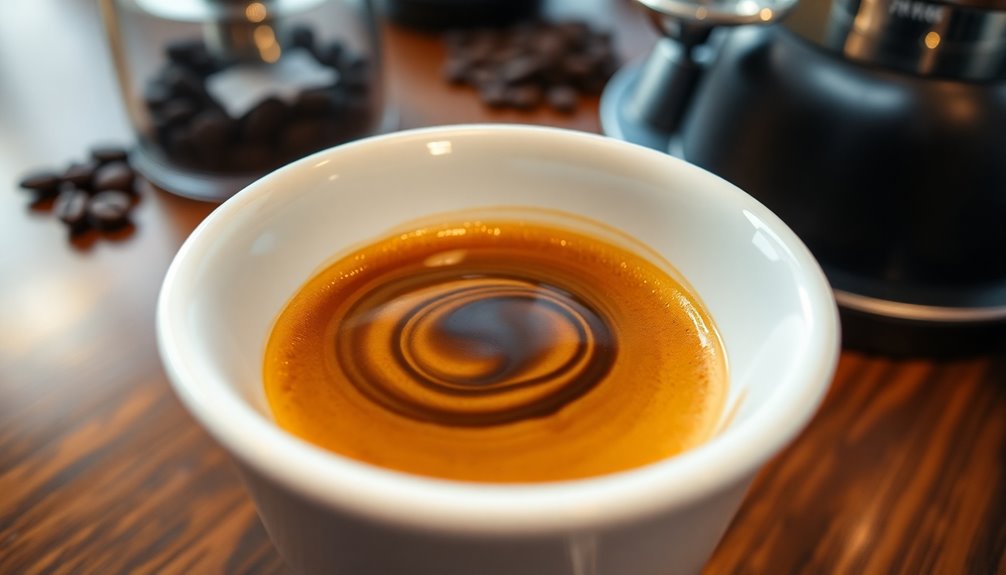
Coffee shots aren't just for energizing your morning; they've practical applications that extend into cooking, cleaning, and even beauty routines.
You can use coffee grounds to scour pots and pans, effectively removing caked-on food with their abrasive texture. When cleaning surfaces, coffee grounds help sanitize while tackling buildup. For fireplace maintenance, scatter used grounds over ashes to minimize smoke clouds and ease removal.
In beauty routines, coffee grounds serve as a natural exfoliant, removing dead skin cells and dirt. They may even help reduce the appearance of cellulite when massaged into the skin. Additionally, using coffee grounds may support liver health by providing beneficial nutrients to your skin. Ground coffee can also be used as a natural hair treatment, helping to exfoliate the scalp and remove build-up from styling products. This can lead to healthier, shinier hair. Additionally, the antioxidants in ground coffee explained that may help protect the skin from damage caused by free radicals, which can contribute to the aging process.
Lastly, if you're into gardening, sprinkle coffee grounds in your soil for natural fertilization, enhancing plant growth while composting.
Popular Variations of Coffee Shots
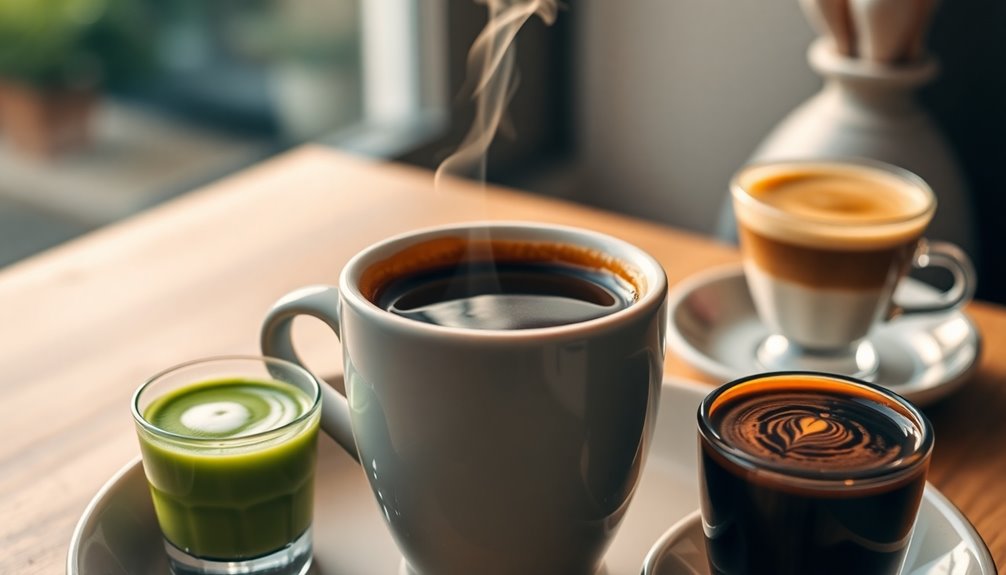
While exploring the world of coffee shots, you'll discover a diverse array of popular variations that cater to different tastes and preferences.
You can choose a single shot for a quick pick-me-up, or go for a double shot (or doppio) for more robust flavor.
For something unique, try a lungo with extra caffeine or a cortado that balances espresso and steamed milk.
If you like sweet, a mocha or hot chocolate coffee adds chocolatey goodness.
For a treat, indulge in an affogato—espresso over ice cream.
Regional favorites like galão or café au lait offer their own twists, while Irish coffee combines whiskey and espresso for a cozy experience.
Brewing Techniques for Espresso
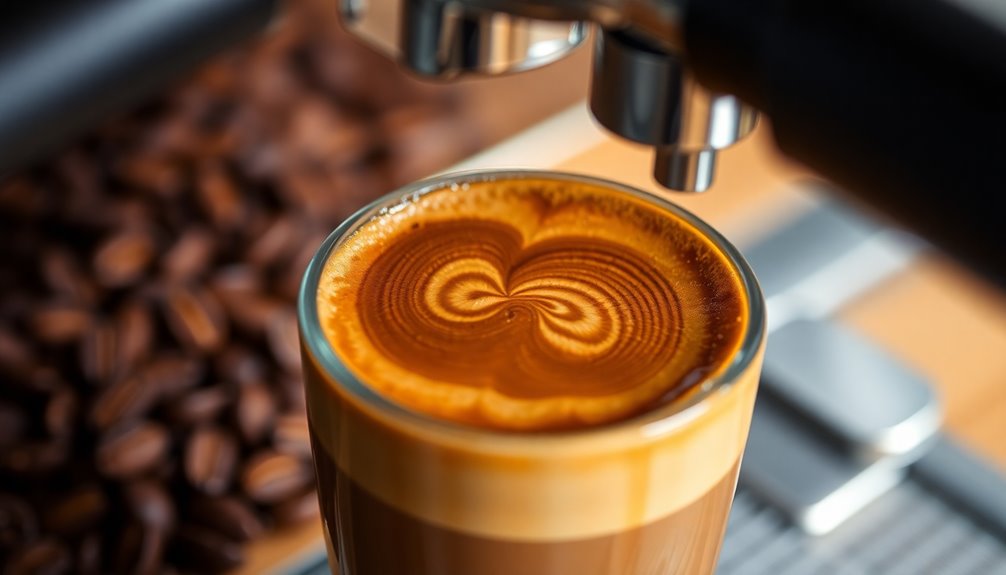
Mastering brewing techniques for espresso can elevate your coffee experience significantly.
Start by warming up your espresso machine for 15-30 minutes. Use a burr grinder to achieve a fine grind, akin to powdered sugar, measuring 18 grams for a double shot.
Add the ground coffee to the portafilter and tamp it down evenly with firm pressure. Always use fresh, filtered water at 200°F (93°C) to fill the machine's reservoir.
Aim for a brew time of 25-30 seconds, watching the espresso stream for that thick, warm honey appearance. Additionally, ensure that the brewing temperature remains consistent within the optimal range of 195°F to 205°F (90°C to 96°C) for the best flavor extraction.
Finally, evaluate the crema for thickness and color, and enjoy the rich, complex flavors that follow.
Precision in each step ensures a delicious cup every time.
Tips for Enjoying Coffee Shots
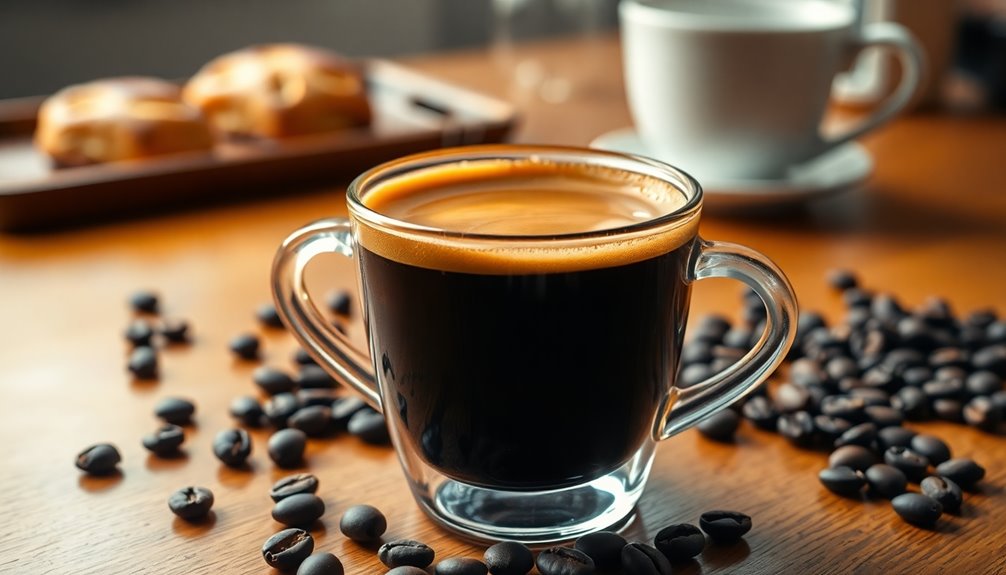
To fully enjoy coffee shots, start by exploring different roast types and processing methods to discover what you like best.
Experiment with various brewing ratios, such as normale or lungo, to adjust the intensity and clarity of your espresso. Take notes on your preferences to refine your coffee journey.
Don't hesitate to add milk to your favorite shots for delicious espresso-based drinks like cortados.
When ordering, be clear about what you want, and remember that a double shot is often the standard.
Lastly, be mindful of when you consume your shots to maximize their caffeine impact.
Enjoy the experience and appreciate the expertise of baristas who craft these delightful beverages for you.
Frequently Asked Questions
Can Coffee Shots Be Made With Alternatives to Espresso?
Absolutely, you can make coffee shots using alternatives to espresso!
Methods like the AeroPress and Moka Pot let you create concentrated coffee with rich flavors. While they won't replicate espresso's high pressure or crema, they still deliver a strong coffee experience.
Just use finely ground coffee and follow the recommended water ratios for the best results.
You'll enjoy unique flavor profiles and a satisfying brew without needing an expensive espresso machine.
How Do I Store Leftover Espresso Shots?
To store leftover espresso shots, keep them in a cool, dark place.
Use an airtight container to minimize exposure to air and moisture. If you're storing them short-term, a glass jar works well.
For long-term storage, opt for a heavy-duty canister and consider placing it in the freezer.
Just avoid opening it frequently to maintain temperature stability.
This way, you'll preserve the flavor and aroma of your espresso shots effectively.
What Equipment Is Needed to Make a Coffee Shot?
To make a coffee shot, you need essential equipment.
Start with an espresso machine, which brews the coffee under pressure. You'll also need a quality coffee grinder to ensure the beans are ground to the right consistency.
Don't forget the portafilter to hold the coffee grounds, a tamper for compressing them, and a steam wand if you want to froth milk.
Lastly, a clean drip tray will help keep your workspace tidy.
Are There Health Benefits to Drinking Coffee Shots?
Yes, there are health benefits to drinking coffee shots. Consuming moderate amounts can reduce your risk of heart disease and stroke.
Studies suggest that drinking 2-3 cups daily lowers cardiovascular disease risk. Additionally, coffee's antioxidants can help improve inflammation and may even aid in cancer prevention.
Can I Use Flavored Coffee Beans for Espresso Shots?
You can use flavored coffee beans for espresso shots, but you might face some challenges.
Oily flavored beans can cause build-up in your espresso machine, requiring more frequent cleaning to maintain its performance. Additionally, the flavors can linger, affecting the taste of future shots.
It's often better to choose medium or light roasted beans for your machine, ensuring a cleaner brew and preserving the rich, natural flavors of your coffee.
Conclusion
In summary, a coffee shot is more than just a quick caffeine fix; it's a rich experience packed with flavor and aroma. Understanding its composition and brewing techniques can elevate your coffee game, allowing you to fully appreciate each sip. Whether you prefer a classic espresso or a creative variation, experimenting with different flavors and methods can enhance your enjoyment. So go ahead, embrace the world of coffee shots, and savor every moment!

